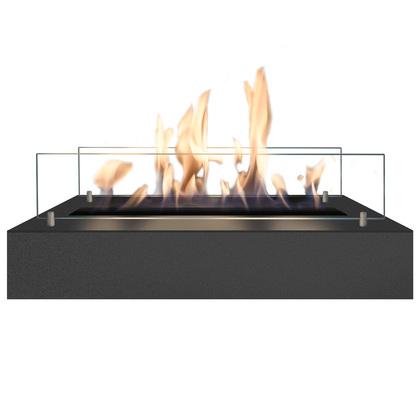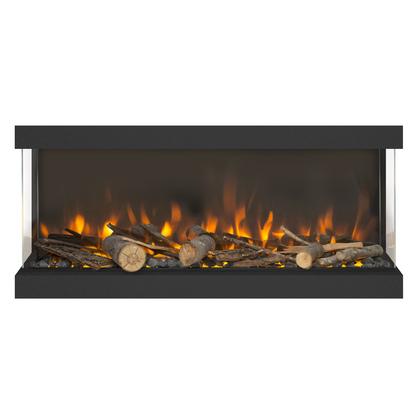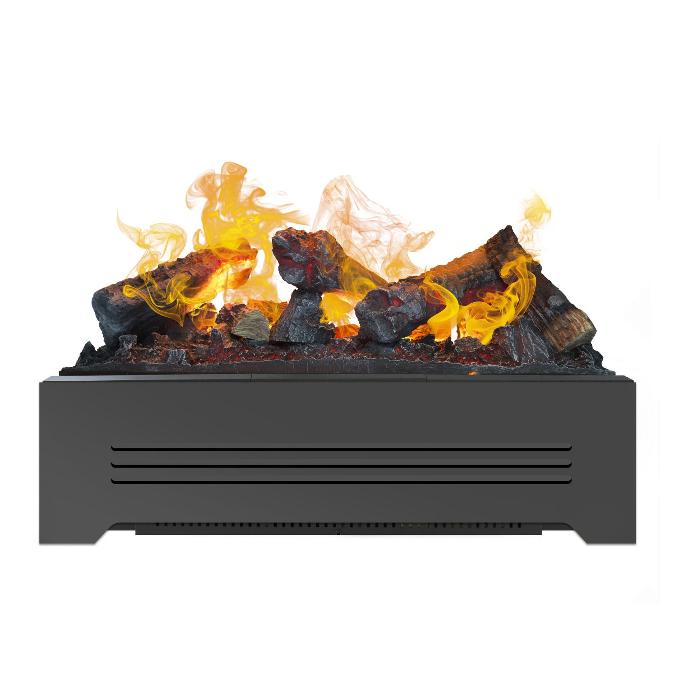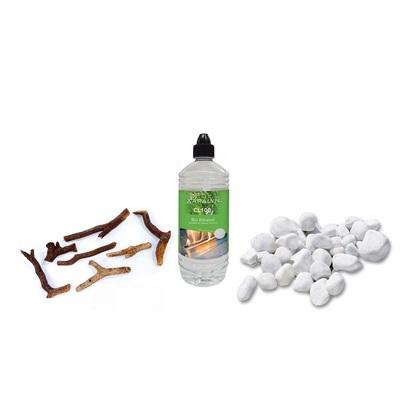Recognizing safe bioethanol fireplaces
Prevent accidents
Although bioethanol is classified as a "hazardous substance," it is still permitted for indoor use as fuel for bioethanol fireplaces that do not fully comply with safety standards. A CE marking on these products only adds to the confusion. A bioethanol fireplace with CE marking may be compliant according to the general directives, but according to the European Standard (EN), it can still be considered unsafe.
So what do the different markings actually mean?
EN marking: European Standards (EN) are developed under the auspices of the European standardization organization CEN in Brussels and are published per country by the participating national standardization institutes. These standards are documented, non-binding agreements. In other words, they are not mandatory. The European Commission encourages the voluntary application of standards it considers useful.
CE marking: A product must carry CE marking if it falls under one or more of the official European CE Directives. For products manufactured outside Europe, CE stands for Conformité Européenne — meaning it conforms to European requirements. All such products must be tested for compliance with minimum EU requirements before they are allowed on the market. CE marking requires conformity with health, safety, performance, and environmental standards relevant to the product category.
A bioethanol fireplace may be CE-marked while still only partially complying with European standards — unless it also explicitly mentions compliance with an EN standard. So, CE means the product meets the minimum requirements for entry into the European market, whereas EN means it complies with the highest relevant standards for health, safety, performance, and environmental protection.
It is well known that burning a bioethanol fireplace can be extremely dangerous. And yet, unsafe models are still allowed on the European market — even though fully safe alternatives exist that comply with all the criteria set by the European standardization organizations.
As consumers, we are often tempted by a lower price and a good sales pitch like “if you use it carefully, nothing will go wrong.” So it’s up to you: do you choose your wallet or your safety?
Within Europe, the strictest safety standard for bio-ethanol fireplaces is EN 16647:2015.
Scope of EN 16647:2015
- Applies to freestanding, built-in, or tabletop bioethanol fireplaces without a chimney.
- For decorative purposes only, not intended as primary heating.
Design & construction requirements
- Must be designed to minimize the risk of fire and burns.
- Stable construction (should not easily tip or slide).
- Fuel tank must be leak-proof.
- Protection against overheating and fuel overflow is required.
Safety Features
- Must include a flame extinguishing system.
- Refueling is only allowed when the unit is completely cooled down.
- Automatic safety locks are recommended in case of misuse (e.g. while burning).
- Must be protected from contact with open flame or hot surfaces (e.g. with shielding).
Performance Testing
-
Fireplaces must undergo:
- Stability tests (to prevent tipping).
- Leakage tests.
- Flame extinguishing tests.
- Thermal stress tests.
Warnings & User Instructions
-
A clear manual must be provided in the local language, including:
- Safety instructions..
- Proper refueling procedures.
- Suitable fuel (bioethanol only).
- Warning not to use in poorly ventilated spaces.
- Pictograms or warning symbols for quick hazard recognition.
Markings & Documentation
-
The product must include:
- Manufacturer’s name.
- Serial number or unique identifier.
- Reference to the applicable standard (EN 16647).
- A user manual is required to be included.
Additional Safety Advice
- Use in combination with smoke and CO detectors is recommended.
- Minimum clearance distances to combustible materials must be clearly specified.
CE Marking for bioethanol fireplaces
CE marking is not mandatory for bio-ethanol fireplaces. If a fireplace is CE-marked, the manufacturer must self-declare that the product complies with all applicable European regulations. Within the EU, product safety is always legally required — even without CE marking.
In this case, CE marking on a bio-ethanol fireplace is like a butcher inspecting his own meat — it’s a declaration made by the manufacturer alone.
The supplier is responsible for ensuring the product meets at least the minimum standards. In case of a claim, insurance companies may point to the user's own responsibility. Testing organizations such as Kiwa or TÜV can inspect a bio-ethanol fireplace to ensure it meets the European Standard. A fireplace or burner that has been tested by such a body will always come with a certificate.
How Xaralyn bioethanol fireplaces score
Design & Construction
- Must be designed to minimize the risk of fire and burns.
Xaralyn bioethanol fireplaces fully absorb and retain fuel, even when flipped over.
- Stable build — not easily tipped or moved.
- Fuel tank must be leak-proof.
Xaralyn bioethanol burners use double-walled stainless steel reservoirs.
- Protection against overheating and fuel overflow is required.
Safety Features
- Must include a flame extinguishing system.
Two independent extinguishing methods are available on Xaralyn models.
- Refueling is only allowed when the unit is completely cooled down.
Xaralyn bioethanol burners can only be filled when not in use..
- Automatic safety locks are recommended in case of misuse (e.g. while burning).
- Must be protected from contact with open flame or hot surfaces (e.g. with shielding).
Xaralyn bioethanolfirreplaces have Flame protection through glass shielding.
Conclusion: out of 8 construction and safety requirements, Xaralyn bioethanol fireplaces score above average on 5.



